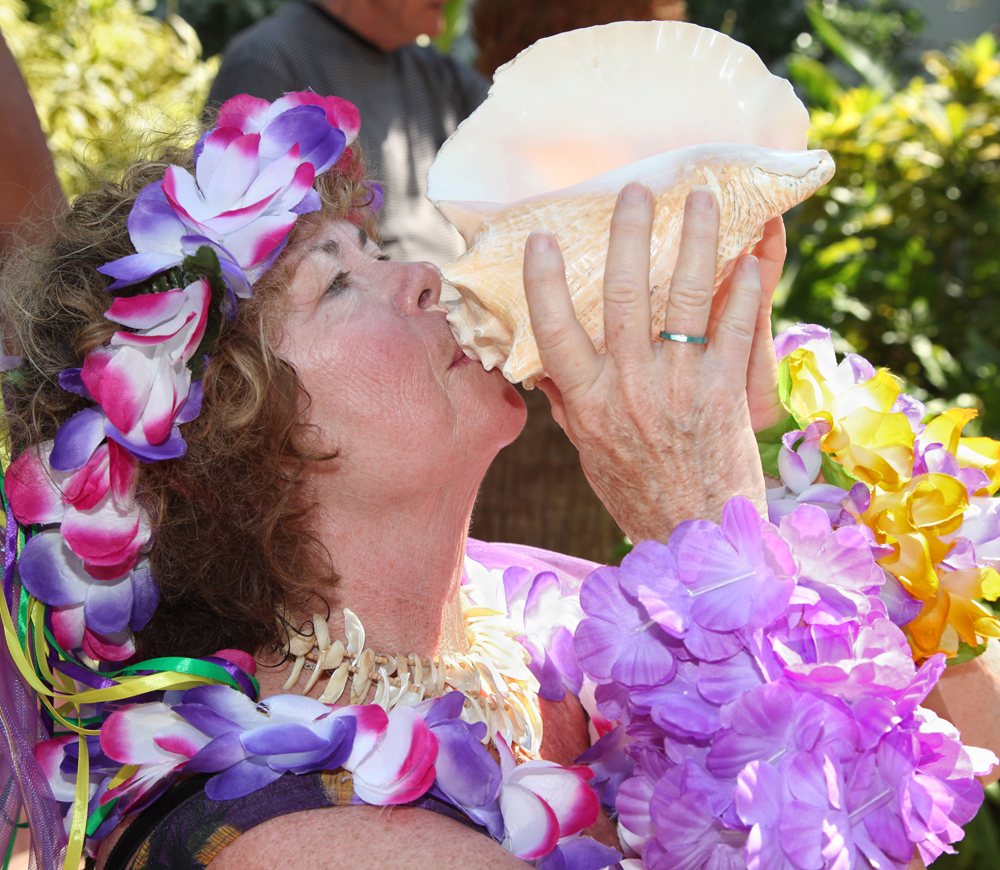If you want to be mistaken for a Florida Keys resident — or at least an island-savvy regular visitor — don’t ever say “kontch.” The widely-used word “conch” is pronounced “konk,” like a conk on the noggin (which, though tempting, should not be delivered to people who persist in pronouncing it wrong).
For those who haven’t encountered it before, a conch is a mollusk (sometimes known as a sea snail). That might not sound too appetizing, but actually conch meat is served and savored in scores of restaurants from Key Largo to Key West.
It tastes a bit like abalone, and it can be found in creamy white or tomato-based chowder, deep-fried fritters served with cocktail sauce, tangy chilled conch salad and even breaded and fried as conch steak. No two restaurants prepare it quite the same way — which means “foodies” can have a great time sampling conch in many different eateries, comparing tastes and cooking techniques.
As well as eating conch, early Keys residents used its fluted pink-lined shell as a horn for long-distance signaling. And according to legend, they came to admire the mollusk’s tough, hardy nature so much that they adopted its name for themselves.
Today conch is no longer harvested in the Keys, but the word “conch” refers to someone born in the island chain — which is affectionately known as the Conch Republic.

Former Key West Mayor Dennis Wardlow (left) and other founders of the Conch Republic re-enact the historic secession ceremony on the irreverent republic’s 30th “birthday.” (Photo by Andy Newman, Florida Keys News Bureau)
How did that name come about? Like many other things, it’s a long story. It involves stale Cuban bread, a governmental border checkpoint, a request for $1 billion in foreign aid, and the Florida Keys’ symbolic secession from the United States in 1982.
The story began when a U.S. Border Patrol checkpoint was set up without warning in Florida City, at the head of the Keys, supposedly so agents could search cars for drugs and illegal immigrants. The roadblock created a traffic jam miles long on the Overseas Highway, the only road that connects the island chain to mainland Florida, for vehicles leaving the Keys.
The massive traffic delays threatened to derail the emerging tourism-based economy — and made locals furious. The border patrol checkpoint, they figured, meant the government was treating their beloved Keys like a foreign country. With impeccable logic, they decided the island chain should BECOME a foreign country.
On April 23, 1982, in front of an enthusiastic crowd at Key West’s Mallory Square, a hardy group of patriots proclaimed the Keys the independent Conch Republic and hoisted a flag bearing a large conch shell on a field of blue. They declared war on the United States by ceremoniously bopping a U.S. Navy sailor on the head with a loaf of stale Cuban bread, surrendered 60 seconds later and demanded $1 billion in foreign aid.
The story of the secession captured international attention, and the imaginations of thousands of people who flocked to visit the new country. During the excitement caused by the birth of a nation, the Border Patrol checkpoint quietly vanished, never to reappear.

“Patriots” wave flags and display signs during a ceremony marking the 30th anniversary of the founding of the Conch Republic. (Photo by Andy Newman, Florida Keys News Bureau)
Loyal citizens are still waiting for the foreign aid (no surprise there). But that hasn’t dampened the spirit of the republic, whose motto is “we seceded where others failed.” Conch Republic passports and royal blue flags are as popular today as they were in 1982, and ambassadorships are highly prized.
The 35th anniversary of the fateful secession will be commemorated April 21-30 with the Conch Republic Independence Celebration — an annual festival that proclaims Keys residents’ pride in being part of the irreverent, good-natured “country.”
Highlights include a “drag” race for female impersonators, a “sea battle” featuring historic tall ships, and the World’s Longest Parade — so named because its route down Key West’s famed Duval Street proceeds from the Atlantic Ocean to the Gulf of Mexico.
There’s still time to travel to the nation of islands for its 35th “birthday.” But if you can’t make the celebration, don’t worry; the exuberant spirit of the republic is apparent all year long.
Whenever you arrive, though, remember one vital rule: don’t ever call it the “Kontch” Republic.


